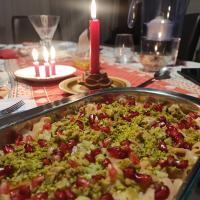Copy Link
Add to Bookmark
Report
Mead Lovers Digest #1651

Subject: Mead Lover's Digest #1651, 3 November 2013
From: mead-request@talisman.com
Mead Lover's Digest #1651 3 November 2013
Mead Discussion Forum
Contents:
Re: Sterilizing question (Steve Piatz)
Re: Sterilizing question (Paul Shouse)
Re: Sterilizing question (Dick Dunn)
NOTE: Digest appears whenever there is enough material to send one.
Send ONLY articles for the digest to mead@talisman.com.
Use mead-request@talisman.com for [un]subscribe and admin requests.
Digest archives and FAQ are available at www.talisman.com/mead#Archives
A searchable archive is at http://www.gotmead.com/mldarchives.html
Digest Janitor: Dick Dunn
----------------------------------------------------------------------
Subject: Re: Sterilizing question
From: Steve Piatz <sjpiatz@gmail.com>
Date: Fri, 1 Nov 2013 14:43:42 -0500
Jack Eyton asked about light struck meads and sterilization.
Regarding light struck meads, the process is the result of a chemical
change in the mead as a result of exposure to high energy light, in
particular exposure to ultraviolet light. In wines it results from
riboflavin reacting with some amino acids to form hydrogen sulphide and
mercaptans.. The important amino acids are cysteine and methionine. The
resulting compounds can have the aroma/taste of leek, onion, cooked
cabbage, wet wool and other unpleasant characteristics. In the wine world
is seems that the amount of amino acids left in the wine makes a big
difference in how susceptible the wine is to becoming light struck - aging
on the lees will increase the amino acid content. In wines there can also
be a precursor from the hydrogen disulphide which can degrade into
mercaptans. The light stuck character is easier to notice in neutral white
wines than red wines in part because there is less to hide behind. In
addition, in red wine production there can be lower H2S content because of
process differences.
Sparkling meads that are bottle conditioned, therefore aged on the yeast,
would be susceptible to becoming light struck more easily than the same
mead that was force carbonated. In general, it seems there are many
ingredient and process variables that would influence how susceptible a
mead is to becoming light struck.
The best way to prevent an infection is to maintain proper sanitation from
the start through to packaging. I find Star San works very well for my
meads.
- --
Steve Piatz sjpiatz@gmail.com
------------------------------
Subject: Re: Sterilizing question
From: Paul Shouse <paulhshouse@gmail.com>
Date: Sat, 2 Nov 2013 08:19:23 +0900
>>This may be a dumb discussion but do meads get light struck in the same
>>manner as white whines? I am wanting to know more about what exactly
causes
>>this to happen and if there is a way to prevent it. For example to pre
treat
>>to prevent light struck and then uv sterilize to clear an infection.
As I understand it, mead, beer and wine can all be light struck but it has
nothing to do with infection. The problem is a chemical change caused by
exposure to light, especially UV light. This can cause a loss of aroma,
color, and produce off tastes like cabbage, burnt rubber, etc. Exposing
bottled mead to UV light would only make the problem much worse.
The only way to prevent light strike is to keep your mead in a dark place
during fermentation and aging. Keep it in a cellar or a closet, or cover
the carboy with a blanket. Also, green or brown glass bottles can help
limit exposure to light, that's why they are colored in the first place. I
hope this helps.
------------------------------
Subject: Re: Sterilizing question
From: Dick Dunn <rcd@talisman.com>
Date: Sun, 3 Nov 2013 19:29:30 -0700
In the last MLD, Jack Eyton asked about preventing mead from becoming
light-struck. I re-read the post and decided that Jack isn't really
dealing with a light-struck mead right now. Rather, he would like to
do a UV treatment to deal with an infection, but doesn't want that to
cause the mead to be light-struck instead, trading one problem for
another. (Is that right, Jack?)
If so, I've got two responses--neither of which address the light-struck
question, sorry!
First is: What sort of infection are you getting? In my experience,
infected/contaminated mead is rare, mainly because it's just not very
hospitable for spoilage organisms. So first try to prevent the problem
from happening, instead of treating after it has started.
Second is: Depending on the type of "infection", UV may not be very
effective at stopping it. It might take an implausibly high level of
irradiation to do the job.
- --
Dick Dunn rcd@talisman.com Hygiene, Colorado USA
------------------------------
End of Mead Lover's Digest #1651
*******************************
























